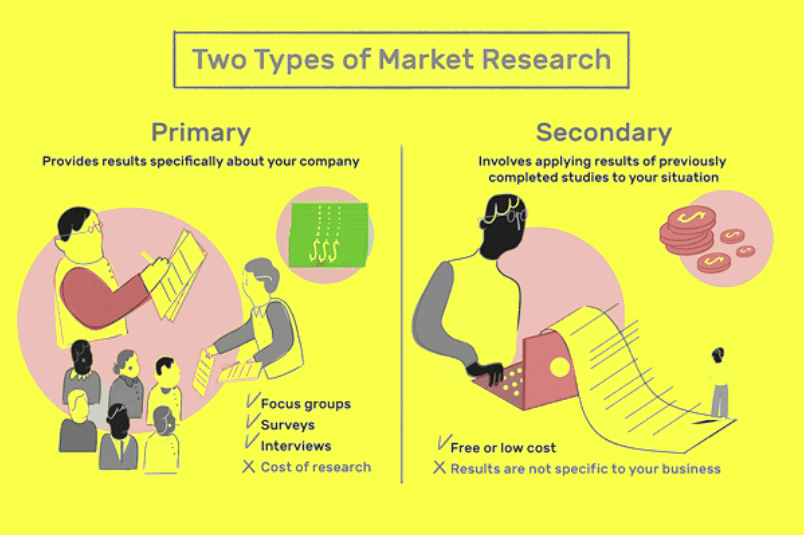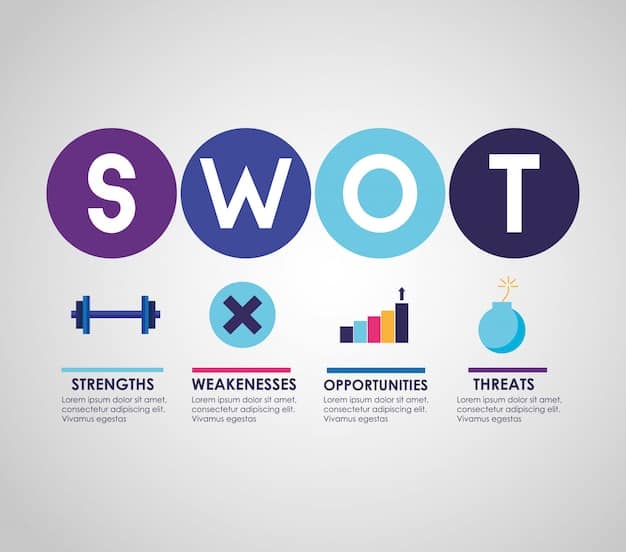Market Research and Industry Analysis:
What You Need to Know
Table of Content: what you will learn here
The Basics of Market Research 2
Primary vs. Secondary Research 3
Qualitative vs. Quantitative Research 4
The more you learn about the market you plan to target with your product or service, the better off you’ll be in the long run. One of the best ways to learn about your market is through market research, which involves gathering information on how people spend their money, how they feel about specific products and services, and so on. While some entrepreneurs try to come up with their products or services without doing any market research beforehand, this strategy isn’t recommended, especially if you have little to no experience in business or marketing.
The Basics of Market Research

Marketing is all about understanding your audience. And one of the most important things you can do for your brand is learn about its buying habits, what they care about, and what makes them tick. This will help you decide which channels work best for marketing your product, who needs to be on your team, or where to start looking for customers. Market research will also help you tailor your product in a way that speaks directly to the needs of potential buyers, so you have a better chance of success.
Primary vs. Secondary Research

When you’re starting your own business, it’s essential to do some research. But which type of research should you focus on? The two main types of market research are primary and secondary. Primary research is original data that the researcher gathers through surveys or interviews—other individuals who have already collected the data in a particular field conduct secondary research. Primary research gives a complete picture of what people want in a product or service. In contrast, secondary research can provide information about an industry’s current state or consumers’ buying habits. It all depends on what you want to know about your potential customers and how much time you want to spend gathering information!
Qualitative vs. Quantitative Research

Interest in a product is one of the most critical aspects of research. Market research often provides qualitative data, which can be gathered through surveys or interviews with potential customers. Quantitative data from a study is usually collected by observation, such as counting the number of customers entering a store.
Data Collection Methods

When starting a business, you must know who your customers are. Market research is one way to collect that data. There are many market research methods, such as surveys, focus groups, interviews, and observation. Surveys might be the most popular option because they’re inexpensive and quick for marketers. Focus groups can help get feedback about products. Interviews may allow you to have more in-depth conversations with potential customers about their thoughts on different products or services. Observation can provide you with information about how people use certain products or services in their day-to-day lives so that you can make better decisions when designing your product or service.
Industry Analysis

The first step in conducting industry analysis is determining what products or services will be offered. Once this is determined, a company needs to conduct market research by surveying customers’ buying habits, researching current competitors, analysing their websites for appealing or not-appealing features, etc.
When conducting market research, companies need to ask potential customers what they want and what they don’t like and why they don’t like it.
SWOT Analysis

Market research is an integral part of any business’s plan. You need to know who your customers are, what they want, where they can be found, and what the competition looks like before you dive in. This is just a snapshot of the information you’ll need before committing time or money to your product or service. A market research analyst will help you find out if there’s even enough demand for your product or service so that it might be profitable. These professionals also study buying habits to see how often people buy goods of this type, how much they’re willing to spend, and other essential details influencing purchase decisions. The market research process starts with data collection. Surveyors contact potential customers and ask questions about their needs, preferences, and buying habits. They may use phone interviews, surveys, focus groups, or social media channels like Facebook and Twitter to reach consumers at home.
Competitive Analysis

If you are interested in entering the market research industry, it is essential that you take a look at the buying habits of your target audience. For instance, what is their age demographic? What are their buying habits? Are they consumers or investors? Who are their leading competitors, and how do they differ from your company? Doing this will give you an idea of what services you can offer them. The first step would be to learn more about your potential clients’ buying habits and understand what they want.
Putting It All Together

Whether you’re starting a one-person business or hoping to join an established company, the first step is always market research. You first want to identify your target audience–the people who would be most interested in your product or service. Once you know whom you’re trying to reach, it’s time for market research. This involves looking at your target audience’s current buying habits and interests. The more data you have about what they like and don’t like, the better off you’ll be when it comes time to create your marketing plan.

